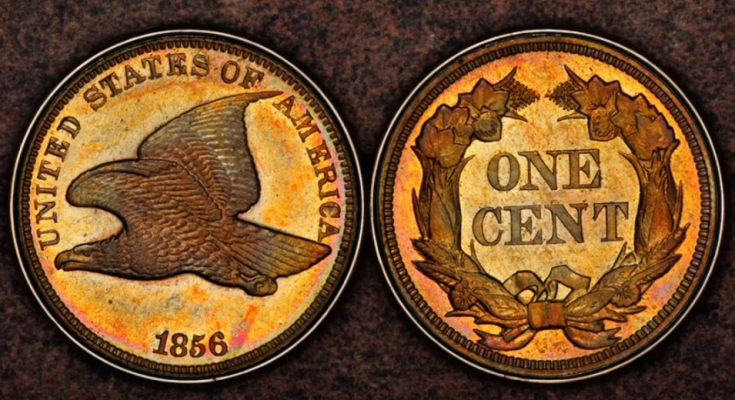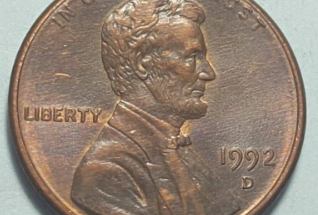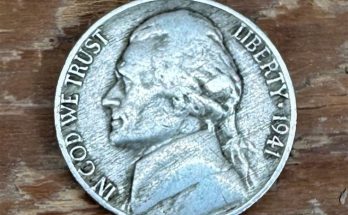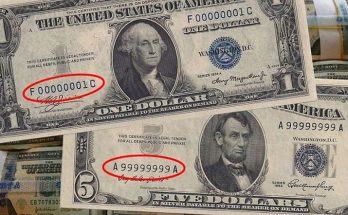The highest-graded example of an important coin from the 100 Greatest U.S. Coins book sold for a record $312,000 to lead Heritage’s U.S. Coins Signature Auction to $14,144,452 November 20-24.
The result for the 1856 Flying Eagle Cent, PR67+ PCGS CAC beat the previous record of $240,000, set in 2020 at Heritage Auctions, and led an outstanding event teeming with early dollars, Seated Dollars and Trade Dollars, Shield and Liberty Nickel patterns and Proofs, an impressive selection of early copper and U.S. gold from all series.
Also venturing into uncharted territory was a 1915 Buffalo Nickel, PR69 PCGS that was the finest certified at PCGS and kept climbing all the way to $240,001.20, more than tripling the previous auction record that had stood for over 19 years. The original mintage from the Philadelphia Mint included just 1,050 pieces but failed to capture the appreciation of contemporary collectors. It is possible that some of the Proofs went unsold, with the remainders melted after the end of the year, and the surviving population has been estimated at about 700 examples in all grades. The coin sold in this auction is the finest certified example at PCGS, while the NGC census also lists a single PR69 example; Heritage experts believe that citation also represents this coin, which was in a PR69 NGC holder in prior auction appearances.
The top pair of results were for coins that were among 71 from The Greensboro Collection, Part XI from the trove that made its Heritage debut at the 2012 ANA National Money Show in Dallas; additional installments have appeared at assorted Heritage events since then. The lots from the collection in this event include a spectacular set of Flying Eagle Cents, Indian Head Cents, and Buffalo Nickels, almost all of which are in Proof format and with quality — most remain housed in previous-generation holders ranging in grade from PR65 to PR69, with Cameos, Red Cameos, finest-knowns and CAC coins — never matched in any collection offered at Heritage.
One of the finest treasures in the auction that was not offered from a featured collection was a magnificent 1870-CC Liberty Double Eagle, AU Details NGC that ended at $216,000. The 1870-CC Liberty Head Double Eagle is a landmark rarity in the series, the rarest issue among Type Two Double Eagles in terms of absolute and condition rarity. The beauty sold in this auction is from a surviving population that has been estimated at only 55-65 examples in all grades.
An 1879 Flowing Hair Stella, PR63 Cameo NGC CAC drew a winning bid of $156,000. Popular among collectors because of its status as both a type coin and a coveted numismatic trophy, it is an iconic coin (Judd-1635) that technically is classified as a pattern that has been integrated into mainstream collecting, with demand consistently exceeding supply, especially for high-quality examples like the one offered in this auction. The 425 Flowing Hair stellas that were struck between October 1879 and May 1880 were intended for inclusion in three-coin pattern sets, along with the 1879 Goloid Dollar (Judd-1617) and Goloid Metric Dollar (Judd-1626).
Also reaching $156,000 was a 1931 double eagle, MS64+ PCGS that is one of just 31 examples graded in 64 (there are five graded 64+), and with 43 carrying finer grades. The fifth-rarest double eagle of the design, the 1931 is one of the scarcer late-date Saint-Gaudens Double Eagles, with an estimated surviving population of roughly 110 coins over all grades.
A 1915-S Panama-Pacific Fifty Dollar, MS64 NGC brought $114,000. It is one of two $50 “slugs” that were part of a five-coin commemorative set marketed by numismatic entrepreneur Farran Zerbe that was offered in conjunction with the 1915 Panama-Pacific International Exposition in San Francisco, a set that also included a silver half dollar, a gold dollar, and a quarter eagle. The coins initially were sold either singly, or in sets. Although 1,500 coins were authorized for each $50 variety, only 483 examples of the Round version, like the example offered in this auction, were eventually distributed, the lowest net production total of any U.S. commemorative coin.
The ninth coin in the auction to reach six figures was a 1795 Capped Bust Right Eagle, AU58 NGC from the Carolina Classics Collection that realized $108,000. The United States Mint produced gold coins for circulation for the first time in 1795, and records indicate a small mintage of 5,583 Capped Bust Right Eagles. It is likely that some 1795-dated coins also were struck in 1796, as the Mint continued to use dies for coinage as long as they were serviceable, regardless of the calendar year. This coin represents the BD-2 variety, which is scarce in absolute terms, but not extremely elusive in the context of the series. John Dannreuther estimates the surviving population at 90-110 examples in all grades.



